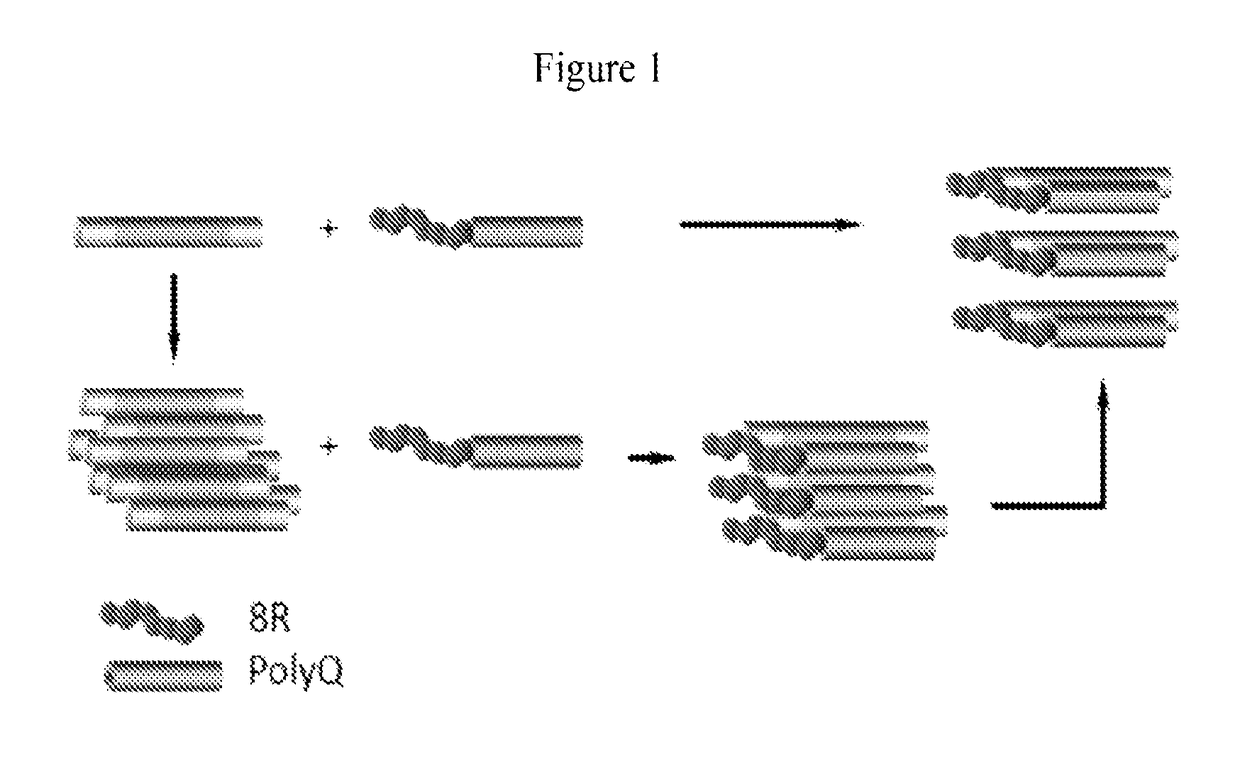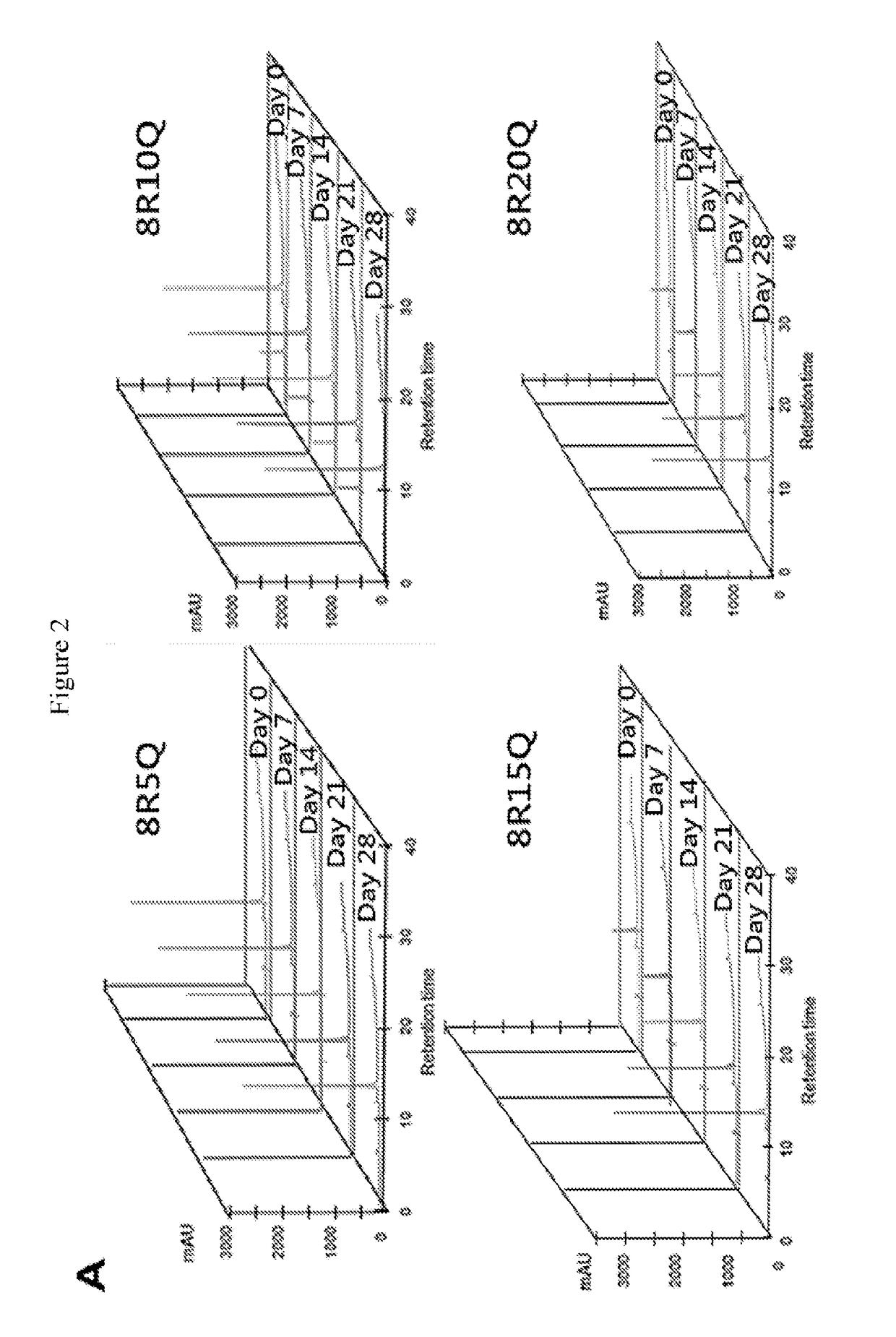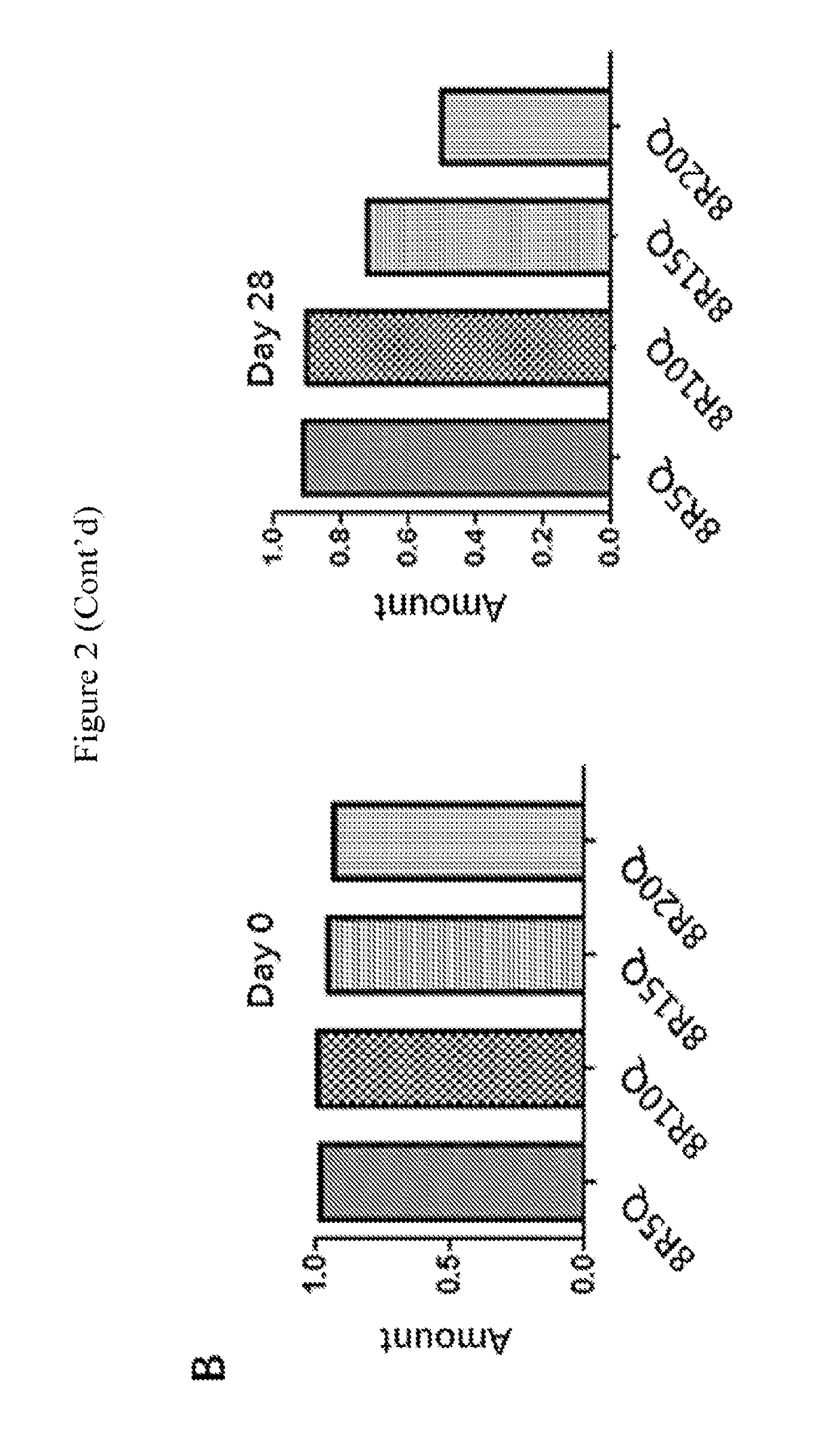Bipartite molecules and uses thereof in treating diseases associated with abnormal protein aggregates
a technology of bipartite molecules and abnormal protein aggregates, which is applied in the field of bipartite molecules, can solve the problems of no cure for these diseases, and achieve the effects of reducing abnormal protein aggregates, beneficial therapeutic effects, and reducing mhtt-mediated toxicity
- Summary
- Abstract
- Description
- Claims
- Application Information
AI Technical Summary
Benefits of technology
Problems solved by technology
Method used
Image
Examples
example 1
Exemplary Bipartite Therapeutic Peptides and Uses thereof in Treating Huntington's Disease
[0112]Huntington's disease (HD) is caused by an expansion of the CAG trinucleotide repeats in the Huntingtin (HTT) gene. The expanded CAG repeats encode an elongated polyglutamine stretch (polyQ) within the mutant Htt (mHtt) protein, which leads to the misfolding and aggregation of mHtt. Provided herein is a series of therapeutic peptides , for example, 8R5Q, 8R10Q, 8R15Q and 8R20Q, which contains polyarginines (e.g., 8R) and a short stretch of polyQ (e.g., 5Q, 10Q, 15Q, or 20Q). The polyQ sequence was expected to confer a specific affinity for the therapeutic peptides to bind to mHtt and the polyarginine fragment possesses the capability to penetrate neurons and prevent mHtt / peptide self-aggregation charge repulsion. This was demonstrated by the observation that in Neuro2a cells (mouse neuroblastoma), 8R10Q co-localized with 109QmHtt aggregates. Both 8R10Q and 8R15Q significantly decreased the...
example 2
Exemplary Bipartite Therapeutic Peptides for Use in Delaying Disease Onset in APP / PS1 Transgenic Mice
[0129]Adult neurodegenerative diseases (NDs) comprise a heterogeneous group of neurological disorders characterized by disease-specific inclusion bodies (IBs) formed by misfolded peptides / proteins. Alzheimer's disease (AD) is the most common ND, with signature IBs, amyloid plaques, and neurofibrillary tangles. An imbalance in the production and clearance of misfolded amyloid β (Aβ) peptide and its variants is considered the primary cause for the pathogenesis of AD. A modular peptidic design combining polyarginines (PolyR) and a peptide derived from the pathogenic peptide / protein forming IBs is discussed below. The designed bipartite peptides were expected to have target-specific affinity and to be able to prevent misfolded peptide / protein self-aggregation by the charge repulsion conferred by PolyR. A designed bipartite peptide R8-Aβ(25-35) and its D form derivative DR8-Aβ(25-35) were...
example 3
Intranasal Delivery of a Bipartite Peptide Reduced Amyloid Burden in the Brains of APP / PS1 Transgenic Mice
[0157]A “scavenger peptide”, V24P(10-40), designed to decrease Aβ accumulation in the brain, was conjugated to polyethylenimine (PEI), and tested as a preventive and / or therapeutic strategy for Alzheimer's disease (AD) in this study. This PEI-conjugated V24P(10-40) peptide was delivered intranasally to the APP / PS1 double transgenic mice of 4 months of age as nasal drops for four months. Compared with control values, peptide treatment reduced the amount of Aβ peptides by 72% of Aβ40 and 40% of Aβ42 in the hippocampus, and by 87% of Aβ40 and 32% of Aβ42 in the cortex. After treatment for 8 months, amyloid load, as quantified by Pittsburg compound B microPET imaging, was decreased significantly in the hippocampus, cortex, amygdala, and olfactory bulb. The data demonstrate that the intranasally delivered scavenger peptide is effective in decreasing Aβ plaque formation in the brain. ...
PUM
| Property | Measurement | Unit |
|---|---|---|
| pH | aaaaa | aaaaa |
| retention time | aaaaa | aaaaa |
| band width | aaaaa | aaaaa |
Abstract
Description
Claims
Application Information
 Login to View More
Login to View More - R&D
- Intellectual Property
- Life Sciences
- Materials
- Tech Scout
- Unparalleled Data Quality
- Higher Quality Content
- 60% Fewer Hallucinations
Browse by: Latest US Patents, China's latest patents, Technical Efficacy Thesaurus, Application Domain, Technology Topic, Popular Technical Reports.
© 2025 PatSnap. All rights reserved.Legal|Privacy policy|Modern Slavery Act Transparency Statement|Sitemap|About US| Contact US: help@patsnap.com



